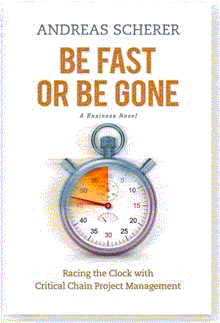 |
|
|
 |
|||||||||||||||||||||||||||||||||||||||||||||||
|
The Theory of Constraints & Drum Buffer Rope 1. Introduction. The TOC logistics concepts were first described in Dr Goldratt's best selling novel The Goal. From those ideas evolved the powerful manual scheduling technique Drum-Buffer-Rope (DBR) which was further described in The Race by Dr Goldratt and Robert Fox. A basic principle of TOC Logistics is that we can view any organisation as a chain .... Q. What determines the strength of a chain? ....... There is only one weakest link in any chain, but what if your organisation is very complex? The more complex an organisation, the fewer independent chains it contains. Fewer chains means fewer weakest links. Therefore complex organisations can benefit even more from TOC. 2. Why Manage by Constraints. Any production unit is limited either by the market demand or by very few factors - it's 'constraints'. Therefore to achieve the objectives there is a need to identify the constraints and to base the actual plans and schedules on their capabilities. Recognition of the limits set by the few constraints also leads the way to facilitate a process of on-going improvement. Let's look at a very simple example and the questions that arise: Product X is manufactured by starting with Raw Material X and then processing it sequentially through 5 operations using machines A to E respectively (see diagram). This is the only use that the five machines are put to. The hourly rates for each machine are given in the table.
This begs a number of questions to help answer...... "Why manage by constraints?":
3. Overview of Drum-Buffer-Rope (DBR). DBR is based on the TOC logistics approach and the TOC five steps of focusing. These are also the basis of POOGI and, as described in The Haystack Syndrome, say: 1. Identify the System's Constraint(s). and the definitions of DRUM, BUFFER and ROPE are:
The identification of all the processing, resource, and marketing constraints within the entire system is needed. These constraints become the primary focus of attention. They are then used to derive the planning, scheduling, and control of all the plant's resources. The result provides a smooth and continuous flow of materials through the plant with minimum disruptions. Any schedule or production plan must be productive, reliable, robust and realistic. Productive in that it must relate to the market demand while contributing to and be measurable against the organisation's goal; reliable and robust in that it must reflect the capability of the resources available and stand up to the inevitable disturbances or disruptions that will hit it; realistic in that it is capable of being done with the resources available including material supply. In any plant, there are only a few capacity constraint resources (CCRs). All CCRs are identified, and the various orders that are to be processed through them are scheduled according their capacity potential and to the market demand. The schedule established for the CCRs determines the drum beat for the system. The essential operational steps of DBR scheduling are as follows:
Buffers provide the timely protection of CCRs from any likely or expected disruption. The rope is the timely release of raw materials into the system, it is tied to the size of the buffer. Buffer Management (BM) provides the means by which the schedule is managed on the shop floor. The strategic points at which buffers are established are called the buffer origins. 4. Buffer Management & POOGI. BM will firstly help to ensure the schedules for the CCRs are maintained and thereby the total schedule. Secondly, by identifying trouble-making non CCR's, it can also focus attention on these and point towards areas for improvement. If, as a result of the improvements there is less disruption from problems then buffers (the Murphy element of them) can be made smaller resulting in shorter lead times, etc, etc. As well as the immediate purpose of managing the day to day running of the schedule, the data obtained from the buffer monitoring can be used to identify trouble making resources as a focus to direct improvements as part of the POOGI. Note: © Focus 5 Systems Ltd. |
|||||||||||||||||||||||||||||||||||||||||||||||
| [Home Page] [ProChain >] [Critical Chain >] [Our Services] [Resources] [Contact Us>] |
|
Copyright by Focus 5 Systems Ltd. All rights reserved. ProChain is a registered trademark of ProChain Solutions Inc. |
|
When projects matter! |
|||||||||||||||||||||||||||||||||||||||||||||||||||||||||||||||||||||||||||||||||||||||||||||||||||||||||||||
|
|||||||||||||||||||||||||||||||||||||||||||||||||||||||||||||||||||||||||||||||||||||||||||||||||||||||||||||



